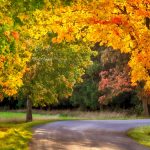Key Takeaways
- Leaning trees and cracked bark—often signal root damage, instability, or internal decay that needs prompt attention.
- Yellowing leaves or thinning canopies—could indicate poor soil conditions, drought stress, or nutrient deficiencies.
- Sudden branch drop and hollow sounds—are signs your tree may be structurally compromised or diseased.
- Fungal growth and visible wounds—suggest rot or pest infestation that may spread without treatment.
- Regular inspections by professionals—can catch hidden dangers early and extend the life of your trees.
If you’ve ever stared at a tree in your yard and wondered whether it was healthy, struggling, or just plain weird-looking, you’re not alone. Trees may be rooted in one place, but they’re far from silent. They speak in a language of signs—subtle (and sometimes not-so-subtle) visual cues that can tell you a lot about their condition. Learning how to read this “secret language” can mean the difference between a thriving landscape and costly emergency removals.
1. Trees Talk Through Their Posture: The Power of the Lean
One of the first signs a tree may be in trouble is how it stands. A slight lean isn’t necessarily a red flag, especially if the tree grew that way over time to reach the sun. But a sudden or increasing lean—especially after a storm—can signal root damage, soil erosion, or structural instability.
Watch for:
- A lean greater than 15 degrees
- Soil heaving or exposed roots on one side
- Cracks in the soil or trunk base
💡 Fun fact: According to the International Society of Arboriculture (ISA), trees with compromised root systems can fall without warning—even if the canopy looks green and full.
What it means: You may need a tree risk assessment or even emergency tree removal, especially if the tree is near structures or power lines.
2. Bark: The Tree’s Armor & Alarm System
Bark acts as a tree’s skin, protecting it from pests, disease, and environmental stress. But it also broadcasts distress signals loud and clear—if you know how to look.
What your tree might be saying:
- Cracking bark: Rapid growth, frost cracks, or internal decay
- Loose or peeling bark: Disease or pest infestation
- Discolored or oozing bark: Possible fungal infection or bacterial canker
📊 Did you know? A study in the Journal of Arboriculture found that vertical bark cracks are often an early warning sign of internal decay, especially in mature hardwoods.
What it means: These symptoms could indicate an underlying issue that needs professional attention. Don’t ignore bark that suddenly looks “off.”
3. Leaves That Whisper Warnings
Leaves are among the most expressive parts of a tree. When something is wrong, they’ll often be the first to signal distress.
Visual cues to watch:
- Yellowing leaves (chlorosis): Often caused by iron deficiency or poor drainage
- Brown edges or crispy leaves: Drought stress or root damage
- Unseasonal leaf drop: A tree’s emergency response to conserve energy
- Wilted leaves on one side only: Could point to root rot or a vascular disease like Verticillium wilt
🌿 Pro tip: If multiple species in your yard show similar leaf discoloration, the issue may be environmental (e.g., compacted soil or irrigation problems). But if it’s isolated to one tree, disease or infestation is more likely.
What it means: Leaf issues aren’t just cosmetic. They’re often the tree’s way of saying “I’m stressed!” and may warrant professional diagnosis.
4. Branches: Broken Signals
Dead or broken branches are more than just an eyesore—they’re often signs of deeper issues.
Signs your tree is speaking up:
- Sudden branch drop (summer limb drop): Usually occurs in older trees and can be a safety hazard
- Bare branches with no buds: Could indicate internal decay
- Crossed or rubbing branches: Create wounds and lead to disease entry points
🪵 Fun fact: The term “widowmaker” is often used to describe large dead branches that can fall unpredictably. These are particularly dangerous in trees like oaks and eucalyptus.
What it means: Strategic pruning—or in some cases, full tree removal—may be necessary to prevent accidents.
5. Trunk Troubles: What’s Going on at the Core?
The trunk is the highway for water and nutrients. Issues here can severely compromise a tree’s health.
Telltale signs:
- Mushrooms or fungi at the base: A sign of decay inside the trunk
- Open cavities or hollows: Loss of internal wood—especially dangerous if the cavity is deep
- Bulging or swelling areas: Can indicate compartmentalized decay or disease
🍄 Did you know? According to the USDA Forest Service, certain fungi like Ganoderma (a shelf-like conk) are directly associated with trunk rot and should be evaluated by a professional immediately.
What it means: Trees with trunk issues may appear healthy up top but are structurally compromised. Don’t take chances—especially near buildings or walkways.
6. Roots and Soil: The Silent Communicators
Roots are often overlooked because they’re hidden, but they’re where a tree starts its conversation. Watch the soil around the base and any exposed roots for clues.
What to monitor:
- Fungal growth at the base
- Soil erosion or mounding
- Roots pushing above ground
- Wet or spongy soil around the tree
🌱 Pro tip: Compacted soil can suffocate roots. If you park cars or place heavy structures over root zones, your tree could be slowly suffocating.
What it means: When the base or roots look “off,” the entire tree is potentially unstable or unhealthy. Schedule an inspection—especially after heavy rain or storms.
7. Insect & Pest Activity: Tree Messaging Hijacked
Trees also attract insects, and not all of them are friendly. Some pests leave distinct calling cards.
Common invaders:
- Borer holes (tiny pinholes in bark): From beetles like the emerald ash borer
- Sticky residue or black mold on leaves: Often from aphids or scale insects
- Sawdust at the base: Sign of carpenter ants or boring beetles
🐛 Fact: The emerald ash borer has killed hundreds of millions of ash trees in North America since it was first discovered in 2002. Early signs include canopy dieback and D-shaped exit holes in the bark.
What it means: Infestations rarely resolve on their own. A proactive approach—pruning, pest treatment, or even removal—can protect surrounding trees and your property.
Why Listening to Trees Matters
Understanding the visual language of trees isn’t just for arborists. It empowers homeowners, property managers, and business owners to take preventive action, improve safety, and preserve the value of their landscapes.
🌳 Healthy trees increase property value by up to 20%
🛡 Removing a hazardous tree before it falls can save thousands in repair costs
📅 Annual tree risk assessments can prevent emergencies during storms
Final Thought: Don’t Just Watch—Act
If your tree is “talking,” don’t ignore it. Whether it’s a subtle lean, a change in color, or sudden leaf drop, these signs are nature’s early warning system. The sooner you respond, the more options you’ll have—from targeted trimming to health treatments or safe removal.
Need help decoding your tree’s signs?
Contact VMG Tree Care for a professional evaluation and expert guidance. We’ll help you protect your home and landscape—one branch at a time.



